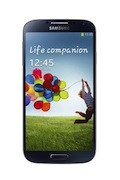Samsung's Galaxy S4 requires an accessory case in order to charge wirelessly. Computerworld - When Samsung's new Galaxy S4 smartphone went on sale this month, lost among the fourth-generation phone's new features was its ability to charge wirelessly through the use of a special accessory case.
Samsung's wireless charging capability is based on the popular Qi (pronounced "chee") standard that's the basis for most of today's wireless charging products. But this week, Samsung also made it clear that Qi-based charging is not its future. Instead, the company plans to release products with native wireless charging capability based on a specification that offers multiple-device charging.

The spec, which has yet to be named, is based on magnetic resonance charging, which offers a larger charging field.
"That's where the future is headed," said Michael Lin, a manager with Samsung Mobile Marketing Alliances. "The use cases are just more compelling. That's why we've invested so much in developing it. We think it will address the charging needs of a much wider audience."
Samsung Electronics and Qualcomm partnered a year ago to form the Alliance for Wireless Power (A4WP), which developed and is promoting its own wireless specification.
Unlike the Qi specification, which is based on magnetic induction technology, A4WP's specification offers a larger charging field. That means multiple devices, such as a tablet or smartphone, can be placed on the same pad and charged at the same time.
To date, most products in the market have been built around magnetic induction charging techniques, which require that the device be in contact with a charging surface, such as a charging pad. The device cannot be moved more than a couple of millimeters before the magnetic power connection is broken.
The leading charging pad supplier to date has been Duracell's Powermat technology, which uses magnetic induction.
While resonance charging is based on the same transmitter/receiver coil technology as magnetic induction, it transmits power at a greater distance. Other companies, such as WiTricity or Power By Proxi, offer devices based on other specifications that can charge from feet away or can be charged simultaneously by dropping them into a box.
Fady Mishriki, of Power by Proxi, shows how distance charging works.
"From Samsung's standpoint, with as many phones as we sell, we can increase [adoption] of the standard and really create an ecosystem for wireless power ... and create interoperability across the industry," Lin said.
Samsung reportedly also plans to release a wireless charging pad for the Galaxy S4. Samsung declined to comment on those reports.
"Our basic use case would be someone with a tablet and a smartphone who would like to have an easy drop-and-go experience for their wireless charging experience," said Kamil Grajski, vice president of engineering at Qualcomm and president of the A4WP.





